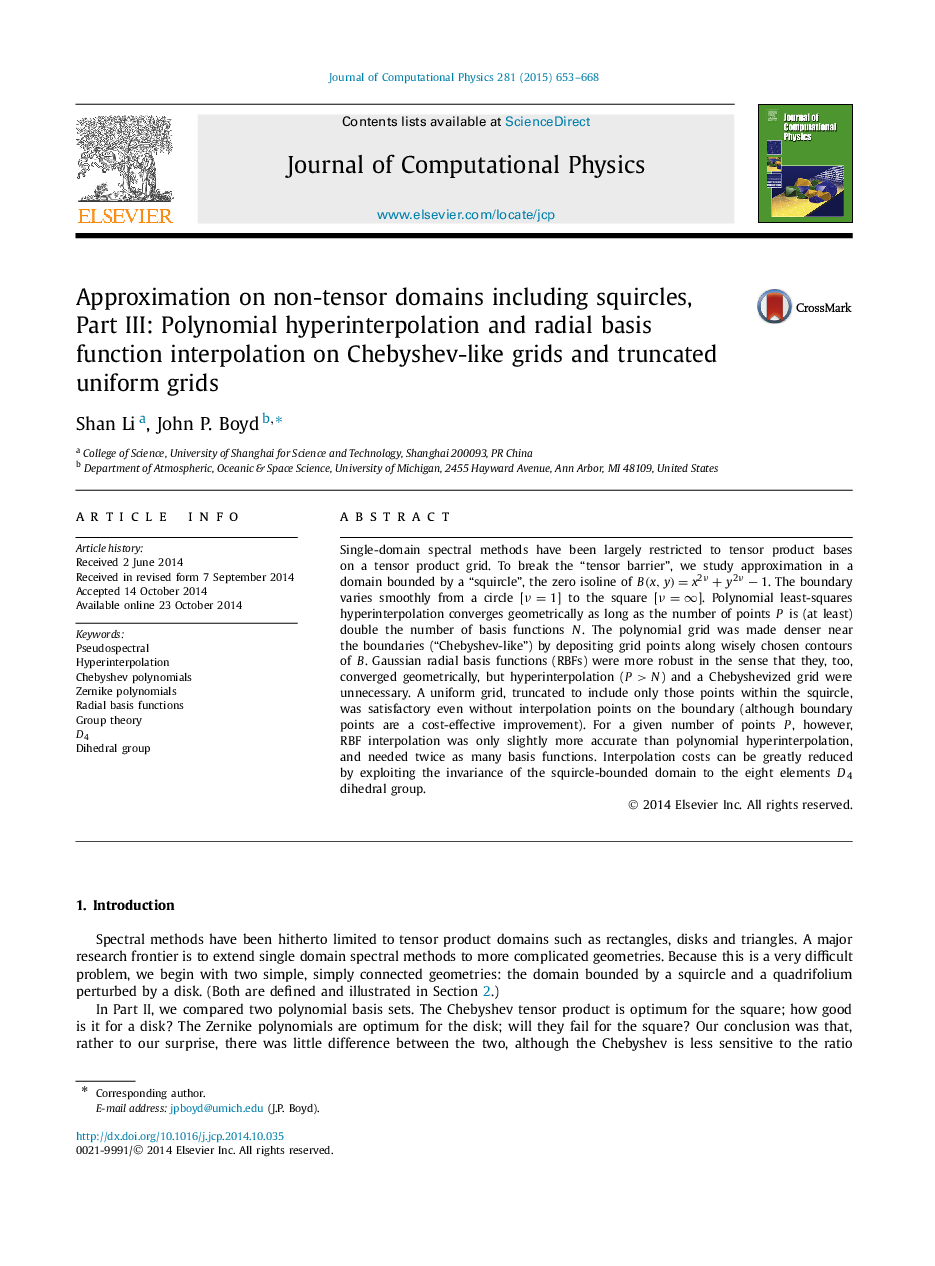| Article ID | Journal | Published Year | Pages | File Type |
|---|---|---|---|---|
| 6932059 | Journal of Computational Physics | 2015 | 16 Pages |
Abstract
Single-domain spectral methods have been largely restricted to tensor product bases on a tensor product grid. To break the “tensor barrier”, we study approximation in a domain bounded by a “squircle”, the zero isoline of B(x,y)=x2ν+y2νâ1. The boundary varies smoothly from a circle [ν=1] to the square [ν=â]. Polynomial least-squares hyperinterpolation converges geometrically as long as the number of points P is (at least) double the number of basis functions N. The polynomial grid was made denser near the boundaries (“Chebyshev-like”) by depositing grid points along wisely chosen contours of B. Gaussian radial basis functions (RBFs) were more robust in the sense that they, too, converged geometrically, but hyperinterpolation (P>N) and a Chebyshevized grid were unnecessary. A uniform grid, truncated to include only those points within the squircle, was satisfactory even without interpolation points on the boundary (although boundary points are a cost-effective improvement). For a given number of points P, however, RBF interpolation was only slightly more accurate than polynomial hyperinterpolation, and needed twice as many basis functions. Interpolation costs can be greatly reduced by exploiting the invariance of the squircle-bounded domain to the eight elements D4 dihedral group.
Keywords
Related Topics
Physical Sciences and Engineering
Computer Science
Computer Science Applications
Authors
Shan Li, John P. Boyd,
